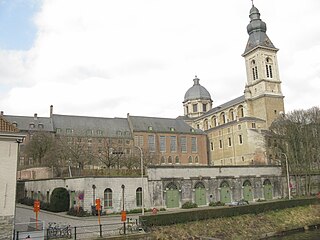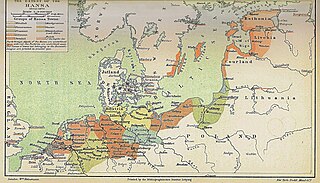The Genealogia comitum Flandrensium, also called the Genealogia Bertiniana, is a short text containing a genealogy of the counts of Flanders. It exists today in three versions, all based on an archetype produced probably at Saint Peter's Abbey in Ghent shortly after the death of Count Baldwin V in 1067. The three versions are all identical up to the 1067, thereafter they diverge. The first version, 204 words in length, continues the genealogy to the death of Robert II (1111); the second, 243 words, to that of Baldwin VII (1119); and the third, 337 words, to that of Theoderic (1168). The complete, 337-word text with variants was edited by Ludwig Bethmann and published in the Monumenta Germaniae Historica (Scriptores, IX, 305–7). It was published under the title Genealogia comitum Flandriae Bertiniana because Bethmann mistakenly believed it to originate in the Abbey of Saint-Bertin. [1]

Genealogy is the study of families, family history, and the tracing of their lineages. Genealogists use oral interviews, historical records, genetic analysis, and other records to obtain information about a family and to demonstrate kinship and pedigrees of its members. The results are often displayed in charts or written as narratives. Although generally used interchangeably, strictly speaking, "genealogy" begins with a person who is usually deceased and traces his or her descendants forward in time, whereas, "family history" begins with a person who is usually living and traces his or her ancestors.
The concept of an archetype appears in areas relating to behavior, historical psychological theory, and literary analysis. An archetype can be:
- a statement, pattern of behavior, or prototype (model) which other statements, patterns of behavior, and objects copy or emulate.
- a Platonic philosophical idea referring to pure forms which embody the fundamental characteristics of a thing in Platonism
- a collectively-inherited unconscious idea, pattern of thought, image, etc., that is universally present, in individual psyches, as in Jungian psychology
- a constantly recurring symbol or motif in literature, painting, or mythology. In various seemingly unrelated cases in classic storytelling, media, etc., characters or ideas sharing similar traits recur.

Saint Peter's Abbey is a former Benedictine abbey in Ghent, Belgium, now a museum and exhibition centre.
The Genealogia had a wide circulation in Flanders. It also circulated in northern Germany, where a Middle Low German translation was included in some manuscripts of the Sächsische Weltchronik , and it was known at the monasteries of Notre-Dame-du-Bec in Normandy and Cîteaux in Burgundy. It was a very influential text in Flanders. The canon Lambert of Saint-Omer used the Genealogia as a source for the genealogy in his Liber floridus , which was in turn a source for the Flandria generosa . [1]

Middle Low German or Middle Saxon is a developmental stage of Low German. It developed from the Old Saxon language in the Middle Ages and has been documented in writing since about 1225/34 (Sachsenspiegel). During the Hanseatic period, Middle Low German was the leading written language in the north of Central Europe and served as a lingua franca in the northern half of Europe. It was used parallel to medieval Latin also for purposes of diplomacy and for deeds.

The Sächsische Weltchronik is a universal history written in vernacular German prose between 1229 and 1277. The twenty-four surviving manuscripts are a mix of Low German (ten), High German (nine) and Central German (five). The 98-line verse prologue is always in High German. The Weltchronik is the oldest historical work in German prose. Ludwig Weiland, who made a critical edition for the Monumenta Germaniae Historica in 1877, gave it the conventional title by which it is most commonly known. The first edition was prepared by Hans Ferdinand Massmann in 1857, but was based on only one manuscript. The manuscripts are classified into three recensions—A, B and C—and the oldest group (A) is entirely High German. Michael Menzel classifies a fifteenth-century manuscript from Wolfenbüttel as the Leittext.

Bec Abbey, formally the Abbey of Our Lady of Bec, is a Benedictine monastic foundation in the Eure département, in the Bec valley midway between the cities of Rouen and Bernay. It is located in Le Bec Hellouin, Normandy, France, and was the most influential abbey of the 12th-century Anglo-Norman kingdom.
The Genealogia is the earliest source for the so-called "Foresters of Flanders" (Forestiers de Flandre), the legendary three foresters—Liederik of Harelbeke, Ingelram and Audacer—who were the first counts of Flanders and the progenitors of the later counts. [1]






